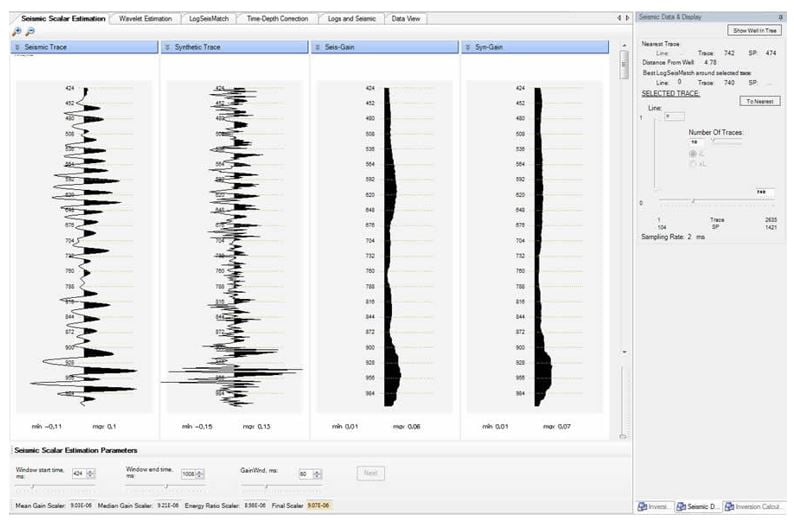Continuing our in-depth look at our Seismic Inversion software
Wavelet Estimation and QC
A wavelet is a convolutional operator between log reflectivity traces and the seismic data. In this package, the wavelet is estimated by matching the log and corresponding seismic segments through the cross and power spectra of both segments (White, 1980). The uncertainty of the estimation can be analysed by several factors such as predictability, smooth bandwidth ratio, correlation coefficient etc. The accuracy of the wavelet can be measured by the normalized mean square error (NMSE). The wavelet estimation can be performed on each well, and their spectral characteristics are analysed. The package also allows external wavelets to be imported for inversion such as Hampton and Russell wavelet and other wavelets.
Seismic Scalar Estimation
It is common that amplitudes of seismic data don’t match the amplitude range of a log reflectivity trace. In other words, when a derived wavelet is convolved with the log reflectivity, the resulting synthetic trace may have a different amplitude range from seismic data. In order to properly calculate a misfit between synthetic and observed seismic data in the objective function computation, there is a need to estimate a scalar which can be applied to seismic data. In this package, the seismic scalar is automatically determined by comparing amplitude envelopes of synthetic and seismic traces. The scalar is then applied to seismic data before inversion begins.
Job Parameterisation
Once the wavelet and seismic scalar are estimated, the next step is to parameterise the inversion job. Parameters to be tuned include starting models, impedance perturbation windows, seismic scalar, seismic and macro-model weights, SA initial temperature, convergence tolerance etc.
Optimal job parameters are determined in such a way that the inverted impedance near the well shows a best match with impedance log and that the misfit between the synthetic trace and seismic trace is at its minimum.
Volume Generation
SA volume inversion allows for the inversion of seismic reflectivity volumes using the wavelet and parameters optimally defined. Volumes or sub-volumes may be inverted, and processing windows using grids or constants specified. Both absolute and relative inversion volumes may be generated. Simulated Annealing Inversion supports multi-CPU processing to increase throughput, whilst allowing the user to carry on working on other parts of the project.


